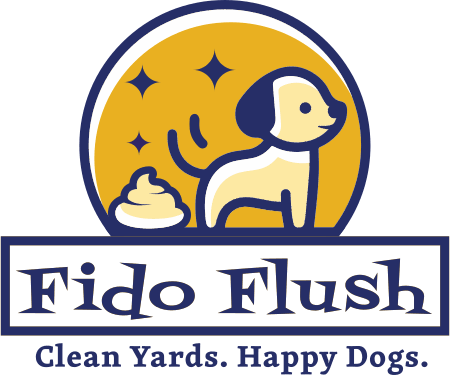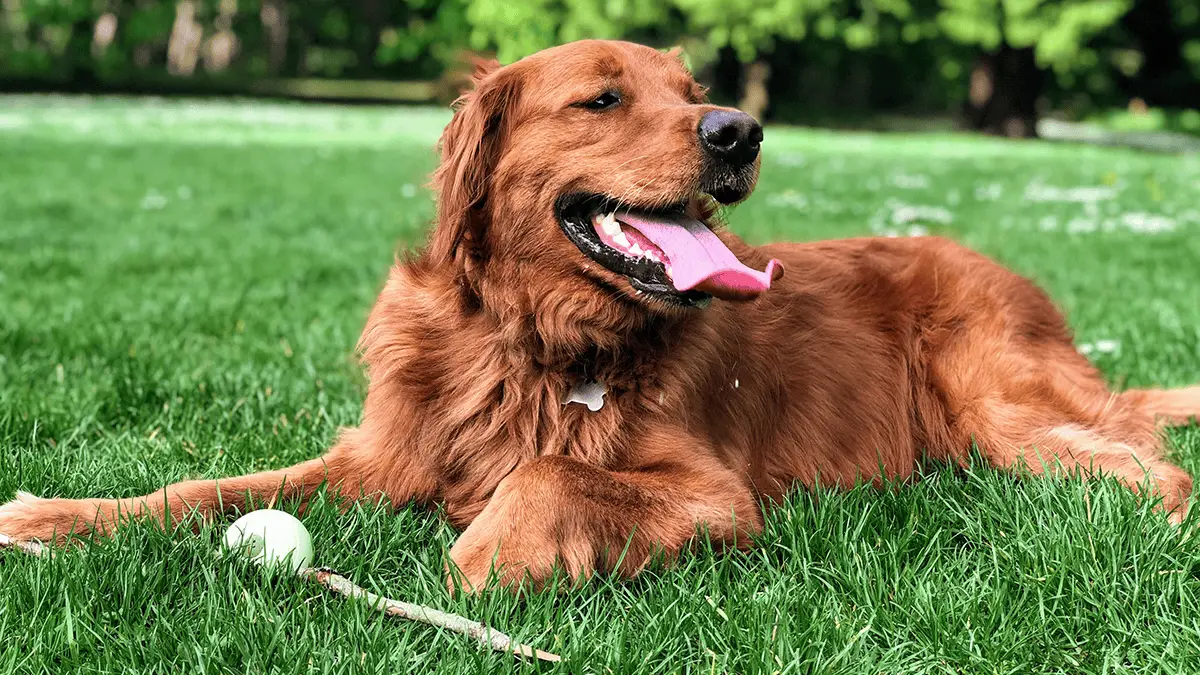Let’s face it – picking up dog poop isn’t anyone’s favorite chore, but it’s an essential part of responsible pet ownership! Did you know that the average dog produces about 274 pounds of waste annually? That’s a lot of cleanup! As a dog owner myself, I’ve learned that proper waste management isn’t just about keeping your yard looking nice – it’s about protecting your family’s health, your local environment, and being a good neighbor. In this comprehensive guide, I’ll walk you through everything you need to know about effectively cleaning up dog waste, from selecting the right tools to implementing a consistent cleanup routine that works for your lifestyle. Whether you’re a new dog parent or looking to improve your current cleanup methods, this guide has you covered!
Why Proper Dog Waste Cleanup Is Essential
The importance of cleaning up after your furry friend goes beyond just aesthetics. There are several critical reasons why proper dog waste management should be a priority for every pet owner:
Health Risks: Dog waste contains harmful bacteria, parasites, and pathogens that can pose serious health risks to humans and other animals. Common parasites like roundworms, hookworms, and giardia can survive in soil for months or even years, creating an ongoing contamination source. Children playing in yards with uncleaned dog waste are particularly vulnerable to these health hazards.
Environmental Impact: When rainwater washes over dog waste, it carries these contaminants into our storm drains, streams, and eventually into our water supply. The EPA actually classifies dog waste as a non-point source pollutant, placing it in the same category as oil and toxic chemicals! The high nitrogen content in dog waste can also damage your lawn and create unsightly dead spots.
Neighborhood Considerations: Most municipalities have ordinances requiring pet owners to clean up after their dogs, with fines for non-compliance. Beyond legal requirements, it’s simply a matter of being a good neighbor. No one wants to step in someone else’s dog’s waste while enjoying outdoor spaces.
Pest Attraction: Uncollected dog waste attracts flies, rats, and other pests that can further spread disease and create additional problems for your household and neighborhood.
Remember, prompt cleanup is key to preventing these issues and maintaining a healthy home environment for everyone!
Essential Tools for Effective Dog Waste Cleanup
Having the right tools makes any job easier, and dog waste cleanup is no exception. Here’s what you’ll need in your arsenal for efficient and hygienic waste management:
Pooper Scoopers: These come in various designs to suit different preferences and yard types:
- Jaw Clamp Scoopers: Perfect for grass and offer a hands-free pickup experience
- Pan and Rake Systems: Ideal for picking up waste from multiple dogs or cleaning larger areas
- Spade Designs: Great for handling waste on hard surfaces like concrete or gravel
Waste Bags: Your first line of defense against mess and odor:
- Biodegradable Bags: Break down faster than standard plastic, reducing environmental impact
- Compostable Options: Designed specifically for pet waste composting systems
- Heavy-Duty Bags: Thicker construction prevents tears and leaks during handling
Waste Bins: Proper temporary storage solutions include:
- Covered Containers: Keep odors contained and prevent access by wildlife
- Specialized Pet Waste Bins: Featured activated carbon filters to control odors
- In-Ground Waste Digesters: For eco-conscious homeowners with adequate yard space
Cleaning Solutions:
- Enzymatic Cleaners: Break down waste residue and eliminate odors
- Lawn Spot Treatment: Helps restore grass damaged by dog waste
- Sanitizing Sprays: For cleaning hard surfaces after waste removal
Protective Gear:
- Disposable Gloves: Add an extra layer of protection during cleanup
- Hand Sanitizer: For immediate hand cleaning after waste disposal
- Dedicated Shoes: Keep a pair specifically for yard cleanup duties
At Fido Flush, we use professional-grade equipment that combines efficiency with sanitation, but many of these tools are also available for homeowners looking to handle cleanup themselves.
Step-by-Step Dog Waste Cleanup Process
Following a consistent process ensures thorough cleanup and minimizes the “ick” factor. Here’s our recommended approach:
1. Daily Scanning and Collection:
Walk your yard daily following a systematic pattern (side-to-side or circular) to ensure you don’t miss any deposits. Morning is ideal since you’ll have good visibility and can remove overnight deposits before they’re trampled or deteriorate.
2. Surface-Specific Techniques:
- Grass: Approach from the cleanest angle, scooping under the waste to avoid lawn damage
- Gravel: Use a small garden trowel or specialized scooper to get between rocks
- Concrete/Pavement: After removal, spray the area with a disinfectant or enzymatic cleaner
- Snow: Use a small shovel to remove waste along with a small amount of surrounding snow
3. Proper Bagging Method:
Turn the bag inside out over your hand, grab the waste, then pull the bag right-side out again, enclosing the waste completely. Squeeze out excess air before sealing to prevent bag ruptures.
4. Handling Old Waste:
For older, dried waste, lightly spray with water to soften before attempting removal. This prevents it from crumbling and makes cleanup more thorough.
5. Public Space Cleanup:
Always carry extra bags when walking your dog. When picking up in public areas, tie the bag securely and dispose of it in designated pet waste stations or wait until you reach a public trash can.
Remember, consistency is key! A regular cleanup routine prevents waste from accumulating and makes each session quicker and easier.
Eco-Friendly Dog Waste Disposal Methods
As environmental consciousness grows, more pet owners are seeking sustainable ways to handle dog waste. Here are the options to consider:
Traditional Disposal:
The most common method is bagging waste and placing it in your regular household trash. While convenient, this sends waste to landfills where it decomposes slowly in anaerobic conditions.
Flushable Options:
Some dog waste can be flushed down the toilet, allowing it to be processed through the same sanitation system as human waste. However, this approach comes with important caveats:
- Only flush the waste itself, not bags (even those labeled “flushable”)
- Check local regulations first, as some water treatment systems aren’t designed to handle pet waste
- Never flush waste from dogs fed raw diets, as it may contain pathogens that municipal systems aren’t designed to treat
Pet Waste Composting:
Specialized pet waste composters create the high temperatures needed to kill pathogens:
- Commercial digesters like the Doggie Dooley use enzymes to break down waste
- DIY systems require careful construction and maintenance
- The resulting compost should only be used for ornamental plants, never edible gardens
Municipal Programs:
Some forward-thinking communities offer specific pet waste collection programs or biogas digesters that convert waste into energy. Check with your local sanitation department to see what’s available in your area.
Myth Busting: Contrary to popular belief, dog waste is NOT suitable as fertilizer for your garden. The high nitrogen content and potential pathogens make it dangerous for plants and people alike.
At Fido Flush, we’re committed to using the most environmentally responsible disposal methods available in each community we serve.
Creating a Manageable Cleanup Routine
The key to successful waste management is establishing a routine that works for your specific situation:
Frequency Guidelines:
- Single Dog Households: 2-3 times per week minimum
- Multiple Dog Households: Daily cleanup recommended
- Small Yards: More frequent cleaning needed due to concentrated waste
- Large Properties: Consider dividing into zones and rotating cleanup days
Yard Division Strategy:
Break your yard into sections and focus on one area at a time to ensure thorough cleaning. Many of our clients at Fido Flush find that creating a mental grid system helps ensure complete coverage.
Weather Considerations:
- Rainy Seasons: Increase frequency to prevent runoff issues
- Winter Months: Don’t skip cleanup during cold weather—frozen waste is easier to pick up, and spring thaws can create major cleanup challenges
- Summer Heat: Clean more frequently to reduce odor intensification
Training Designated Areas:
Teaching your dog to use specific bathroom zones can simplify cleanup. Create a gravel or mulch area and use positive reinforcement to encourage your pet to use it consistently.
Tool Maintenance:
- Clean scoopers weekly with disinfectant spray
- Rinse waste bins monthly and use deodorizing products
- Replace damaged equipment promptly to maintain efficient cleanup
Finding the right balance between thoroughness and practicality is important. Remember that consistency is more important than perfection!
Troubleshooting Common Dog Waste Cleanup Challenges
Even with the best tools and techniques, some situations present unique challenges. Here’s how to handle them:
Difficult Surfaces:
- Tall Grass: Use a rake to gently part the grass before attempting removal
- Rock Gardens: A handheld vacuum dedicated to this purpose can help with residue between rocks
- Mulched Areas: Wear gloves and remove affected mulch along with the waste, replacing with fresh material
Stain and Odor Removal:
- For grass stains, thoroughly rinse the area after removal, then apply an enzymatic lawn treatment
- For persistent odors, try a mixture of water and white vinegar as a natural deodorizer
- Commercial products containing beneficial bacteria can help break down residual waste particles
Multiple-Dog Management:
- Establish a color-coded system to track which dog’s waste has been collected
- Consider testing a small area of artificial turf for heavy traffic zones
- For large properties with multiple dogs, professional services like Fido Flush can be the most efficient solution
Soft Stool Cleanup:
- Sprinkle a small amount of garden lime or specialized pet waste absorber on very soft waste before attempting pickup
- Use a flat shovel with a spray bottle of water to help capture all residue
- Consider consulting your veterinarian if soft stools persist, as this could indicate health issues
Mobility Challenges:
- Extended-reach scoopers reduce the need for bending
- Lighted scoopers help those with vision limitations
- Wheeled collection systems minimize lifting requirements
- For those with significant physical limitations, our Fido Flush service offers a perfect solution
Remember that adapting your approach to specific challenges will make the overall task more manageable.
Professional Pet Waste Removal Services: When to Consider
While many homeowners handle waste cleanup themselves, professional services like Fido Flush offer significant advantages that might make them worth considering:
Service Types Available:
- Regular Scheduled Cleaning: Weekly or bi-weekly service
- One-Time Cleanup: Perfect for spring cleaning or moving into a new property
- Special Event Preparation: Ensuring your yard is pristine before outdoor gatherings
Cost Considerations:
Most professional services base their fees on:
- Yard size
- Number of pets
- Frequency of service
- Accessibility of the property
For many busy families, the cost (typically $15-25 per week for regular service) is well worth the time saved and the assurance of a consistently clean yard.
Benefits of Professional Service:
- Thoroughness: Professionals are trained to find waste that homeowners might miss
- Consistency: Service continues regardless of weather, your work schedule, or travel plans
- Proper Disposal: Professionals ensure waste is disposed of according to local regulations
- Equipment Investment: No need to purchase or maintain cleanup tools
Questions to Ask When Selecting a Service:
- Are technicians insured and background-checked?
- What happens if inclement weather occurs on your scheduled day?
- Do they provide their own supplies or use yours?
- How do they handle gates, pets, and property access?
- What disposal methods do they use?
Seasonal Considerations:
Many homeowners find that professional services are particularly valuable during:
- Winter months when outdoor tasks are less appealing
- Rainy seasons when cleanup is messier
- Summer when odors and pests are more problematic
At Fido Flush, we pride ourselves on reliable, thorough service that gives you back your yard—and your time!
Conclusion
Keeping your yard free of dog waste doesn’t have to be a dreaded chore! With the right tools, consistent routine, and the knowledge you’ve gained from this guide, you’ll be well-equipped to maintain a clean, healthy outdoor space that both your family and pets can enjoy.
Remember that proper waste management is an investment in your family’s health and our shared environment. Whether you choose the DIY approach or decide to hire professionals like our team at Fido Flush, the most important thing is developing a system that works for your household and sticking with it.
Your lawn, neighbors, local watershed – and yes, even your shoes – will thank you! Ready to create a cleaner yard experience? Start implementing these tips today, or contact Fido Flush for a free quote on our professional services. You’ll be amazed at the difference proper waste management makes!
This comprehensive guide was brought to you by Fido Flush, your local pet waste removal experts. We’re committed to helping homeowners maintain clean, healthy yards through professional service and education. Visit www.fidoflush.com to learn more about our services or to schedule your first cleanup!


